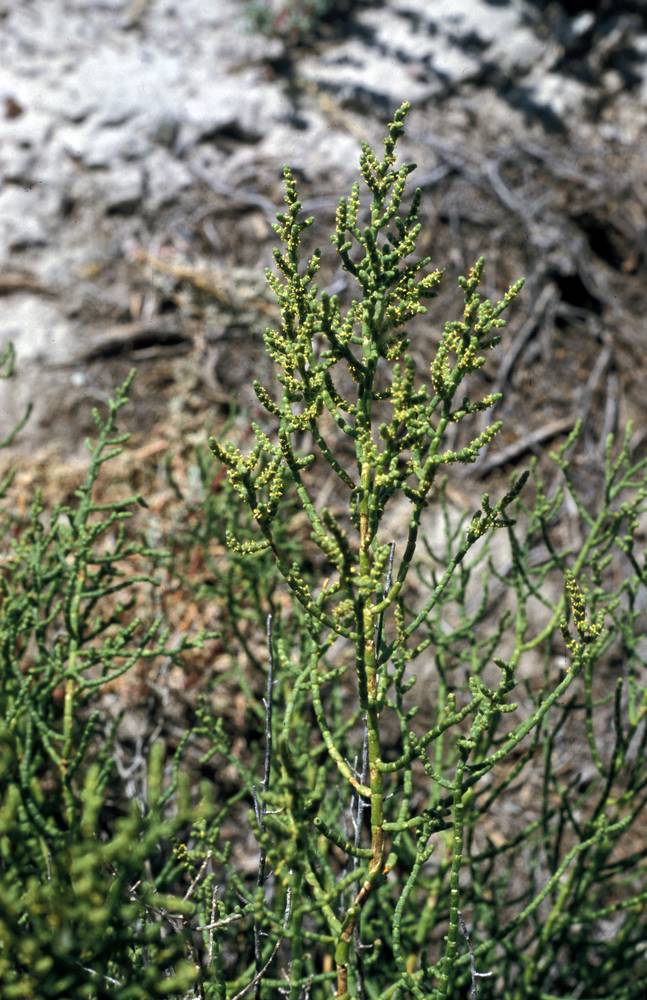
Plants 3–15 dm.
Stems woody proximally, green, sometimes glaucous; joints (2)3–5(10) mm.
Leaves blades 2–4 × 2–3 mm.
Inflorescences 6–25 mm.
Fruits enclosed by perianth.
Seeds 0.6–1.2 mm.
Flats, sandy hummocks, moist alkaline soils. Flowering May–Sep. 1000–1600 m. BR. CA, ID, NV; southeast to TX, south to Mexico. Native.
The name iodine bush may be in reference to the iodine-like sap that exudes from crushed leaves.
as described under Allenrolfea occidentalis
Plants 3-15 dm, ± glaucous. Stems woody proximally, fleshy distally; articulations (joints) (2-)3-5(-10) × 1-4.5 mm. Leaves deciduous; blade 2-4 × 2-3 mm. Inflorescences 6-25 × 2.5-4 mm. Utricles enclosed by perianth. Seeds ca. 0.6 mm.Flowering mid summer-late fall. Alkaline soils, mostly on raised sandy hummocks in salt playas and mud flats; 1000-1700 m; Ariz., Calif., Idaho, N.Mex., Nev., Oreg., Tex., Utah; Mexico.A dominant shrub of salt playas and mudflats in the American Southwest, iodine bush is easily distinguished from great distances by the dark hue of its stems. The blackish-colored shrubs stand in stark contrast to surrounding vegetation and on close examination can be easily distinguished from the opposite-branched, but vegetatively similar members of Sarcocornia.